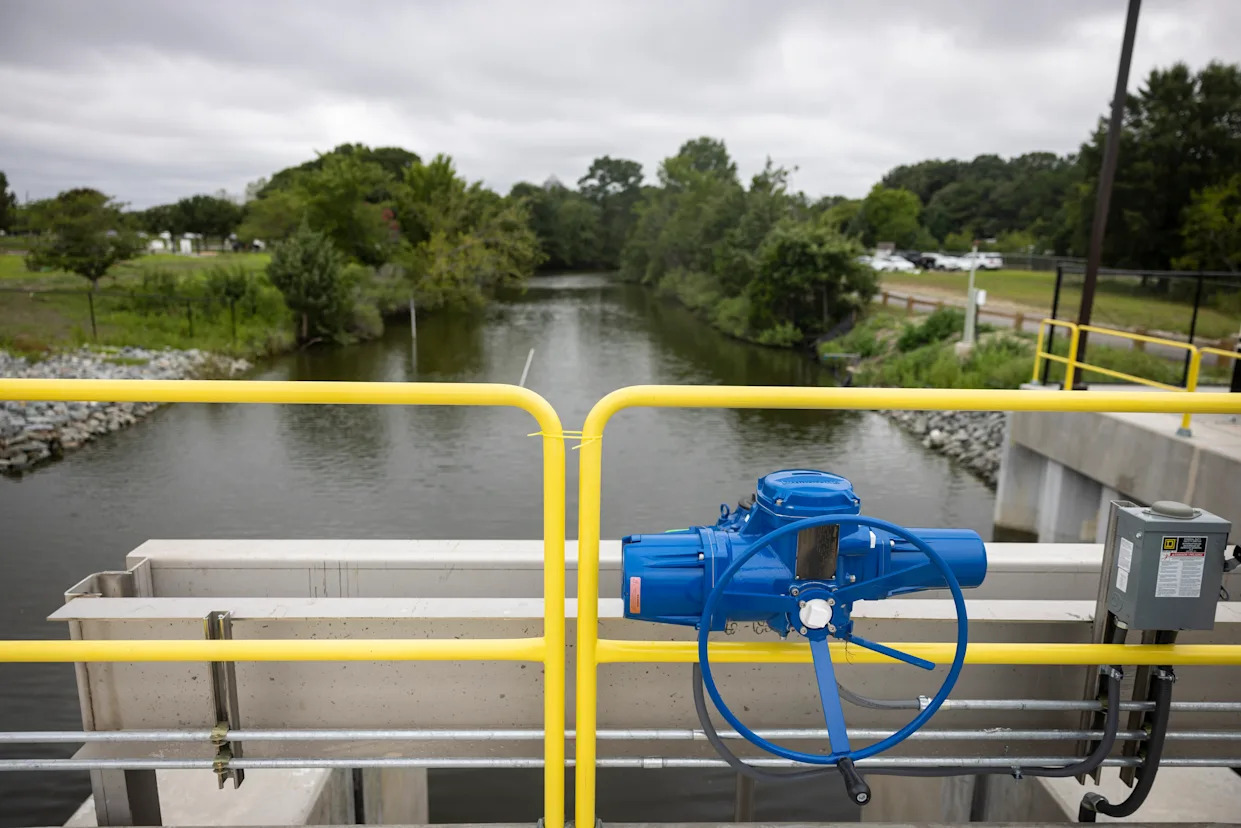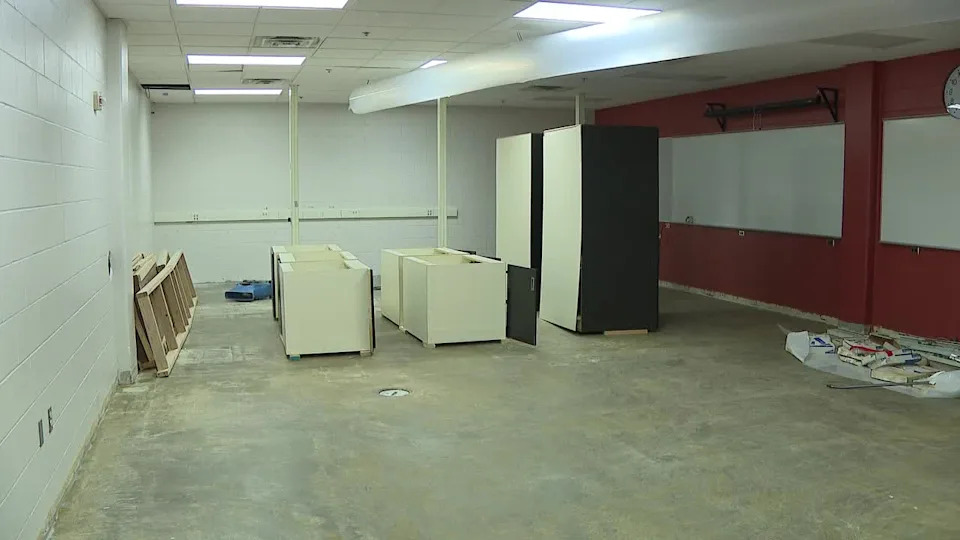
VIRGINIA BEACH — Hurricane Erin spared the Hampton Roads region from heavy rainfall, but the large storm off the coast provided an opportunity for Virginia Beach to test a new $14 million tide gate system designed to protect against prolonged downpours and powerful storm surge.
The city closed the Windsor Woods tide gates next to Mount Trashmore around 1:30 p.m. Wednesday, at low tide before the storm’s affects approached the area. Parts of the Outer Banks experienced flooding from ocean overwash, while Virginia Beach weathered high winds and storm surge near the ocean and Chesapeake Bay. High tide was expected in the area around 9:30 p.m. Thursday.
“We knew it wasn’t a big rain event, more than anything it was a really good opportunity for us to test how it all worked,” Public Works Director L.J. Hansen said during a visit to the site Thursday afternoon. “We never had the opportunity to test it with a tidal event and especially understanding how the wind is going to stack on top of the tides.”
The gates are part of the city’s ambitious Flood Protection Program, initiated after Hurricane Matthew dropped nearly 14 inches of rain in some areas of the city in 2016. Windsor Woods, which sits in a low-lying area in the middle of the city, was one of the hardest hit neighborhoods.
Related Articles
Windsor Woods resident Mary Balonek’s garage flooded during Matthew, and she helped rescue an older adult trapped in her car.
“I knew a lot of people whose houses were completely gutted,” Balonek said. “It was not a good scene.”
Recent upgrades to the neighborhood’s stormwater infrastructure combined with the tide gates relieved Balonek’s flooding concerns.
“They are going to make a difference,” she said.
Hurricane Matthew damaged 1,400 homes, and prompted Virginia Beach to invest in a structural defense network to protect against severe coastal flood risks.
In total, the flood protection program will cost more than $1 billion. The Windsor Woods gates — there are four of them in a row that go up and down — were completed this year. Six temporary pumps are currently being used in conjunction with the gates, but construction of a permanent pump station on the site is planned.
Once the gates were closed, Lake Windsor was pumped through underground pipes into Thalia Creek, which eventually connects to the Lynnhaven River and the Chesapeake Bay. It took about 12 hours to pump the lake down to four-tenths of a foot below sea level. The normally tidal range for the lake is between half of a foot above sea level at low tide and up to 2 feet at high tide, according to Kyle Coolbaugh, the city’s stormwater extension agent.
“By pumping it down as far as we did, we really were able to get a lot of space if we wound up having rain that could fill in the lake, and the streets and homes would stay dry,” he said.
As of Thursday afternoon, the exercise had validated some of the timing issues related to the tide coming in and the pump out system, Hansen said. The city plans to reopen the gates Friday afternoon.
“If we do get something else this year, we’re ready,” Coolbaugh said. “We know what the system’s going to do, and the citizens can rest easy that this gate, these pumps, will do their job.”
Stacy Parker, 757-222-5125, [email protected]








Comments